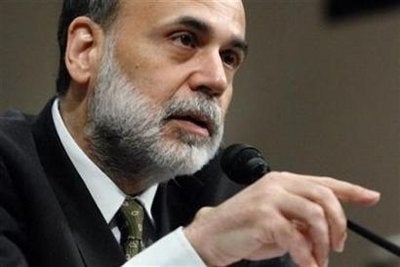
What two vital features of American national life are inordinately costly compared to any other country, no longer deliver world-beating results, are increasingly inequitable, are highly dysfunctional, and elicit growing anger from much of the country's population?
It's not a trick question, but the very fact of these parallels is more than worth pondering.
The answer -- the two H's of health care and higher education. How did two sectors that had been proud symbols of American greatness from the late 19th to the late 20th centuries become emblematic of deep social and economic problems and the nation's slide from global pre-eminence?
America's overall health care bill has soared to about two and a quarter trillion dollars, about 17 percent of GDP -- up from 13 percent of a smaller economic pie just a decade ago, and headed toward 20 percent in a decade. This is roughly double the percentage for Western Europe, Canada, Japan, and other rich countries. Waste and vast overhead costs, overuse of medical services, insufficient competition, and lack of information about most cost-effective practices are among the culprits. Might as well trade in your flat-screen TV for a home MRI machine.
With private-college costs higher than median income, the United States now spends about 3 percent of GDP on higher education -- again, roughly twice the percentage of virtually every other rich country, and they've increased about 3 ½ percentage points faster than GDP growth for the last several decades. Excessive demand making higher ed a seller's market, an "educational arms race" among colleges to have the fanciest facilities, and inadequate financial accountability are just a few of the reasons.
The problem would be bad enough in both sectors if it were just a matter of cost. But it's not. Not long ago, the United States was arguably tops in quality and results in both arenas.
The World Health Organization says that about three dozen other nations have better aggregate health-care outcomes, and the RAND Corporation found that barely half of the treatments that Americans receive are considered "best practices." Similarly, the OECD reports that about a dozen other nations have higher college graduation rates than the United States.
To make matters worse, a nation whose cherished ideals of equality were advanced immeasurably during the 20th century by the diffusion of high-quality health care and higher education now has become troublingly inequitable in both areas. Fifty million Americans lack health insurance and tens of millions of others have limited medical coverage, and access to good care varies tremendously by income. The wealthy get an Alfa Romeo system, the middle class a Toyota one, and the lower-income Americans get a beat-up-old Chevy.
Few Americans are happy with their medical care, and the once-beneficent image of the medical profession as a selfless corps of Marcus Welbys has given way to the more prevalent belief that doctors, hospitals, and pharmaceutical companies are greedy, insensitive, fearful, incompetent, and as honest as the proverbial used-care salesman. Likewise, 75 to 80 percent of Americans are worried about college costs and debt, barley half think that students get a valuable return on higher education, half believe that colleges "mainly care about the bottom line," and three-fifths think that talented students do not have the opportunity to attend college (the numbers are higher among African Americans and Hispanics).
The factors driving the parallel fall from grace of American health care and higher education may be different, but the potential damage to a prosperous, optimistic American future in both cases is enormous. With both, serious cost control, standardization of high quality, and much greater equity are desperately needed.
Higher ed not only requires greater accountability, in part through regulation and tax policy, but also a radical re-think: Does every teen-ager really need to go to four-year colleges, and does every college need to look like a swank corporate conference center? And public dollars need to be freed from the burdens of entitlement spending at the federal and state levels to re-invigorate higher education.
How to control costs, particularly in health care, is the multi-trillion-dollar question of our generation. Universal insurance (not care), with government premium support, combined with some "managed competition" among insurance providers, greater cost-sharing (i.e., individuals paying more out of pocket), increased regulation of health-care providers and their costs (including overhead), a greater emphasis on public health, medical malpractice reform, some rationing of care, and use of information technology to disseminate best and most-cost-effective practices and maintain a national medical-records database all could help contain costs.
Without such changes, America simply won't be healthy, wealthy, or wise.
Andrew L. Yarrow, Washington director and vice president of Public Agenda, a nonpartisan think tank, is a professor of U.S. history at American University, and the author of Forgive Us Our Debts, a book about the causes, consequences, and cures for America's national debt, published by Yale University Press this spring. Yarrow's book Forgive us Our Debts is available from Yale University press
